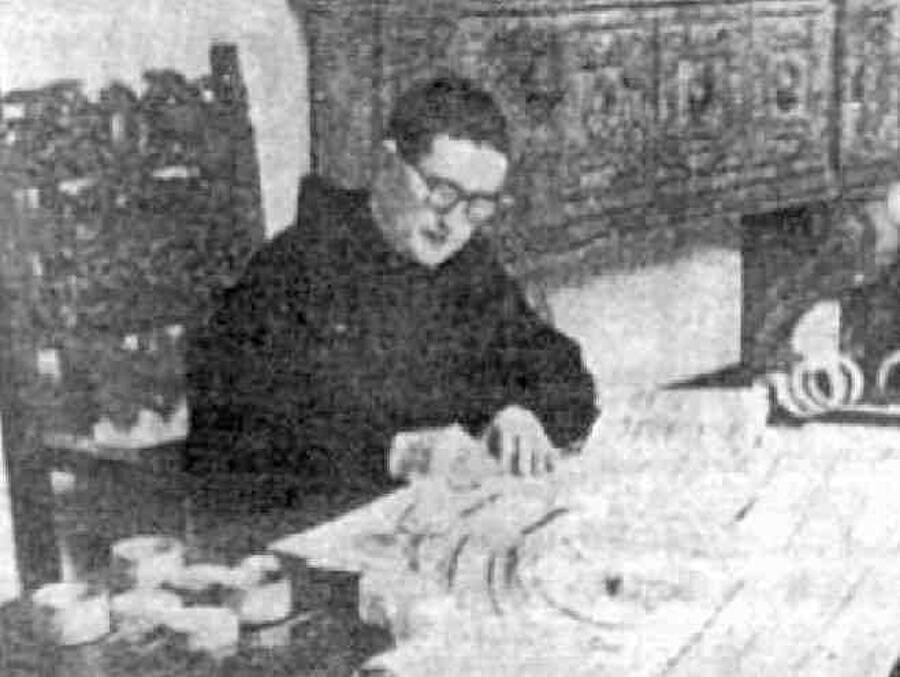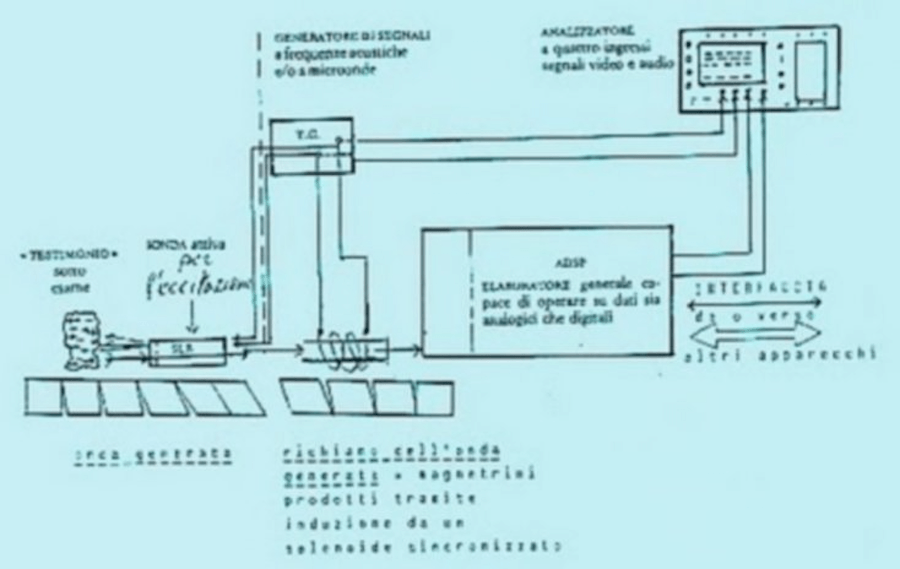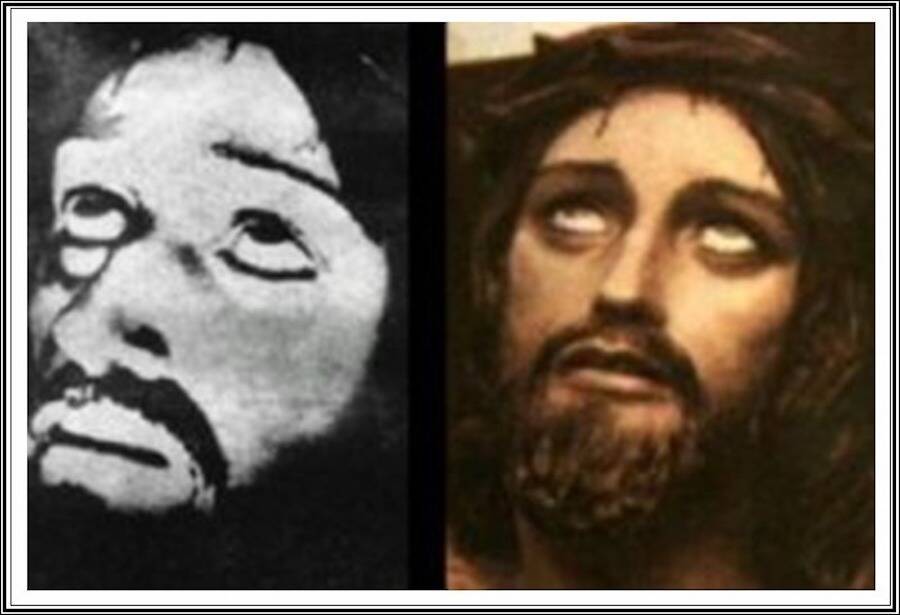From the 1960s until the 1990s, Father Pellegrino Ernetti claimed that he helped create a time machine called the Chronovisor, which he used to observe the crucifixion of Jesus Christ.

Public DomainFather Pellegrino Ernetti, who allegedly helped build the Chronovisor, was a Benedictine monk, scientist and exorcist.
From the unsolved disappearance of Emanuela Orlandi in 1983 to a covert collection of documents known as the Apostolic Archive, the Vatican’s history is full of secrets. And of all the Vatican’s purported secrets, none may be more bizarre than the legend of the Chronovisor.
The Chronovisor is said to be a device that gives the user the ability to see through time. Though the existence of the Chronovisor has never been proven, a 2002 book by Vatican priest Father François Brune says otherwise.
According to Brune, the Chronovisor was developed by Father Pellegrino Ernetti, a Benedictine monk. Ernetti allegedly kept the device secret until the early 1960s when he confided in Brune and told him that 12 scientists, including famed physicist Enrico Fermi and former Nazi scientist Wernher von Braun, helped him to build it.
Made of cathode rays, antennae, and metals that received sound and light signals on all wavelengths, the Chronovisor purportedly allowed the team of scientists to document events of the past, including the crucifixion of Jesus Christ. The machine, therefore, could validate the teachings of the Bible, simply by providing a firsthand look into the past.
The Chronovisor Was Allegedly Built By A Nobel Prize Winner And A NASA Engineer

Wikimedia CommonsEnrico Fermi, who allegedly helped build the Chronovisor, won the Nobel Prize in physics in 1938.
The de facto resource on the Chronovisor is Brune’s 2002 book, Le Nouveau Mystère du Vatican. In it, Brune explains how he met Father Ernetti on a boat ride across Venice’s Grand Canal in the early 1960s. Like Brune, Ernetti was well-versed in the history of ancient languages, which made for natural conversation. But soon, Ernetti directed their chat toward science.
Brune had been expounding on the many ways in which the Christian Bible could be interpreted when Ernetti suggested that he had access to the truth via a time-traveling device.
Ernetti claimed that he and a group of renowned scientists came together in a mutual quest to uncover the past. One scientist was Fermi, who won the Nobel Prize in Physics in 1938, and another was the ex-Nazi von Braun, whose work at NASA got America to the moon.

Wikimedia CommonsNazi-turned-NASA scientist Wernher von Braun (center).
According to Ernetti, the device had several antennae, three of which were made of “mysterious” metals that picked up sound and lightwaves across their entire respective spectrums.
A “direction finder” on the device was allegedly tuned into the specific era one wanted to view, while a screen displayed it and a recording device captured the footage.
The Chronovisor was thus more of a window into the past than a time machine. Ernetti said it worked like a television, catching echoes from days long gone that had been “floating” in space — and he claimed to have seen some astonishing things.
The Device Supposedly Revealed The Bible’s Most Important Moments

Public DomainPurported blueprints for the device.
Ernetti recounted how he witnessed Marcus Tullius Cicero’s speech to the Roman senate in 63 B.C. “His gestures, his intonation,” Ernetti effused. “How powerful they were! What flights of oratory.” Ernetti made additional, increasingly bolder claims, such as having observed the crucifixion of Jesus Christ.
From the founding of the Roman Empire to the destruction of Sodom and Gomorrah, Ernetti alleged that he and his team had taken a peek into some of the most important events in the Bible.
On May 2, 1972, an Italian publication called La Domenica del Corriere published his claim. Titled “A Machine That Photographs The Past Has Finally Been Invented,” the article covered Ernetti’s shocking statements for all of Italy to read.
Alongside the admittedly dubious claims, the magazine published an alleged photograph from the Chronovisor that Ernetti claimed captured the Romans crucifying Jesus Christ. The 1972 article also purported that Ernetti had witnessed the Last Supper and kept a photograph of the Biblical event for himself as a souvenir.

Public DomainOne of the many articles documenting Ernetti’s claims.
Ernetti maintained until his death in 1994 that the machine had been hidden away by the Vatican in order to safeguard it from falling into the wrong hands. Interestingly, the Vatican decreed in 1988 that “anyone using an instrument of such characteristics would be excommunicated.”
Shortly before he died, Ernetti wrote an open letter adamantly reiterating that the device was real. He claimed that “Pope Pius XII forbade us to disclose any details about this device because the machine was very dangerous. It can restrain the freedom of man.”
The Chronovisor Remains Another Vatican Mystery

Public DomainThe purported photo of Jesus (left) and a curiously similar painting (right) created long before Ernetti released this image.
As tantalizing as the Chronovisor may sound, many of Ernetti’s claims about it have since been debunked. Skeptics have maintained that his purported photograph of Jesus was merely a cheap reproduction of a statue housed in an Umbrian church. Another magazine argued that the photo was merely a reversed image of Jesus from a postcard made in the Italian town of Collevalenza.
In 1996, Paracelsus magazine issued further critiques of Ernetti’s claims. The piece questioned why Ernetti hadn’t published detailed instructions on how to build the device in order to legitimize his claims. Furtheremore, the article revealed how the Chronovisor’s design bore a stark resemblance to a similar device in a 1947 sci-fi novella.

YouTubeBrune died a believer in the Chronovisor in 2019.
Some say that Father Pellegrino Ernetti confessed to having fabricated the whole story before his death on April 8, 1994, but this remains hotly contested. With von Braun, Fermi, Ernetti, and Brune now dead, only the intriguing mystery remains.
In that sense, the Chronovisor has stood the test of time as a Vatican mystery for the ages.
After learning about the Vatican’s alleged time machine known as the Chronovisor, read about the tomb of Jesus being unsealed. Then, learn about the strange, long-fought battle between the Vatican and cats.